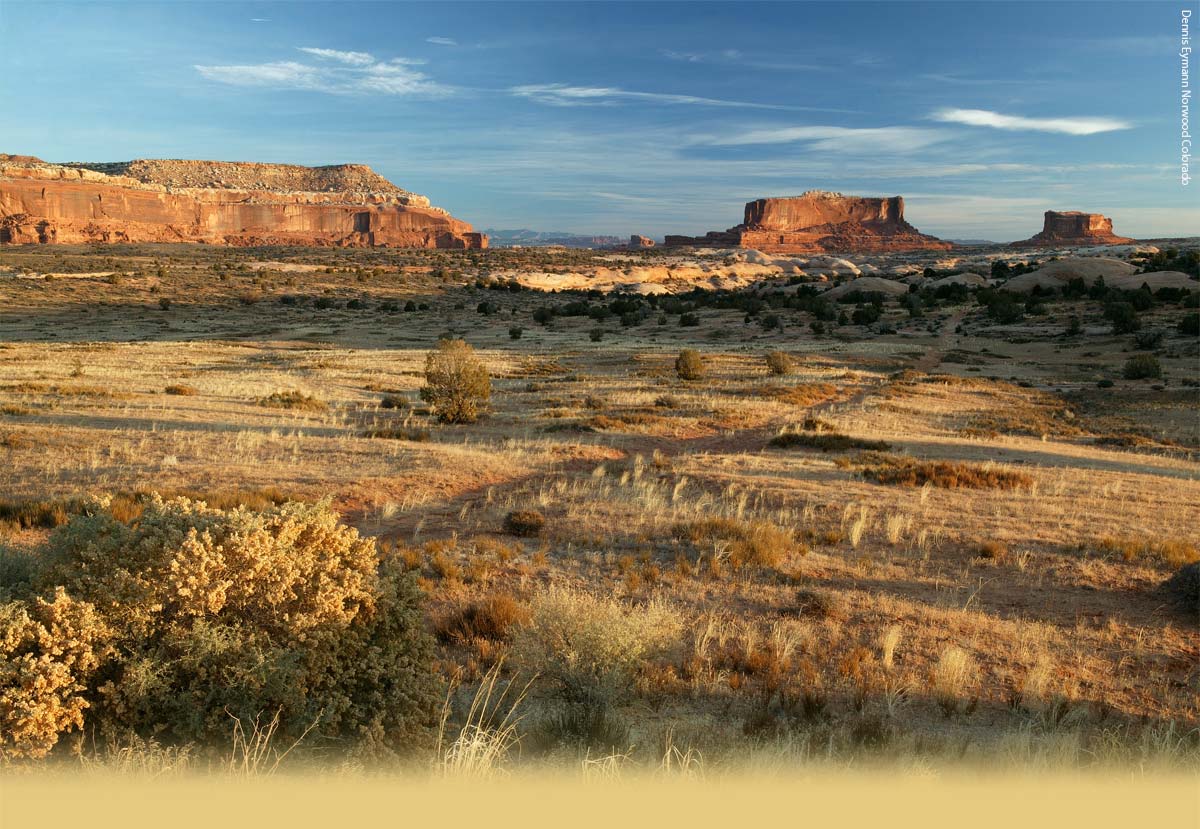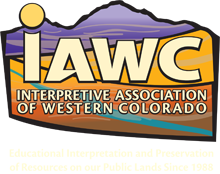Engineering Marvel Unaweep Canyon Hanging Flume to be Reconstructed
By Kathy Jordan
Thursday, April 5, 2012
The hanging flume, of which 7 of its 13 miles clings to a red-rock wall along the San Miguel River in the San Miguel and Dolores Rivers canyons, might leave viewers wondering why and when this wooden structure was built.
Gold was discovered in the San Juan Mountains in 1875 and it didn’t take long for those seeking their fortune to starting staking their claims. From 1883 to 1885 the Lone Tree Mining Company filed 6 1/2 miles of claims along the San Miguel River. One of them was the Bancroft Claim.
By 1888 the Salt Lake City owners of the Lone Tree Mining Company sold their claims to the Montrose Placer Mining Company, owned by investors from East St. Louis, Ill.
According to Frank Hall’s 1895 book, “History of the State of Colorado,” Col. Nathaniel P. Turner, an experienced California mining engineer, felt that hydraulic mining should be used. He claimed that water with a great deal of pressure was needed to make the Bancroft Claim profitable.
Turner’s solution was to divert approximately 80 million gallons of water from the San Miguel River through 13 miles of ditches and a flume every 24 hours. The 7-mile portion of flume that clings to the sheer, cliff wall of the canyon was 6 feet wide and 4 feet high.
Builders used 1.8 million feet of lumber in its construction. Surveyors ran their line by triangulation, making the grade fall 6 feet, 10 inches per mile. According to an oldtimer, points for the triangulation were made by a sharpshooter. The marksman fired a .22 rifle from across the river, making several marks on the rock wall. The marks were used as reference points.
From the wagon road above, workers were let down by ropes to drill into the face of the rock cliff. They inserted iron brackets and set the flume on those brackets. The cliff overhangs ranged from 100 to 150 feet above the river and from 250 to 500 feet below the summit of the gorge.
In places there are cliff overhangs of 15 degrees. When the water escaped from the flume it would strike on the opposite side of the river 100 yards from the base.
Operation began in early summer 1891. Gold content was 25 to 30 cents per yard and workers washed down 4,000 to 5,000 cubic yards daily. The gold was especially fine and had to be saved by liberal use of quicksilver.
The panic of 1893 ended the mining boom, and the flume was left dangling, unused, on the canyon wall.
However, except for the brief explanation in the “History of the State of Colorado” by Frank Hall, it has remained a mystery how the flume was constructed on the sheer, rock walls.
Several scientists have worked since 2004 to unravel the mystery. They have had no photographs, engineering drawings or written accounts chronicling the flume’s construction. However, it is possible that Ron Anthony of Anthony & Associates, a wood scientist from Fort Collins, and Robert Silman Associates P.C. have discovered the answer.
From April 10–15, Anthony & Associates, Vertical Access and Robert Silman Associates P.C. will put their theories to the test by attempting an onsite reconstruction of 48 feet of flume, using what they believe are the original methods of construction.
The public can watch the possible unraveling of this historic structure from several viewing locations along Colorado Highway 141 on any of the six days.
In 2006 the hanging flume made the World Monument Watch list of 100 Most Endangered Sites. Since that time, the Bureau of Land Management has developed partnerships with the National Trust for Historic Preservation, Colorado Preservation Inc., the Unaweep-Tabeguache Scenic & Historic Byway Association, the Western Colorado Interpretive Association and others to help determine how best this unique Western Slope artifact can be preserved for public education and historic interpretation.
More recently the Friends of Northern Dolores, a loose-knit community group promoting the long-term preservation of the northern Dolores watershed’s natural and cultural heritage resources, has been working to bring the story of the flume to the broader public through in-town presentations and on-site tours.
“We had over 100 folks show up for our recent slideshow presentation at KAFM’s Radio Room. We had to turn people away!” said Radio Room Creative Director and FOND supporter Ramona Winkeller.
“We’re planning a follow-up presentation post-reconstruction. Preservation of these heritage sites is clearly a topic that resonates with community members in the Grand Valley.”
It should be noted that this project would not have happened had it not been for the private funding provided by the J.M. Kaplan Fund and the Hendricks Foundation. For more information about the Historic Hanging Flume construction project please contact Western Colorado Interpretive Association at 970-874-6695 or go to www.hangingflume.org.

